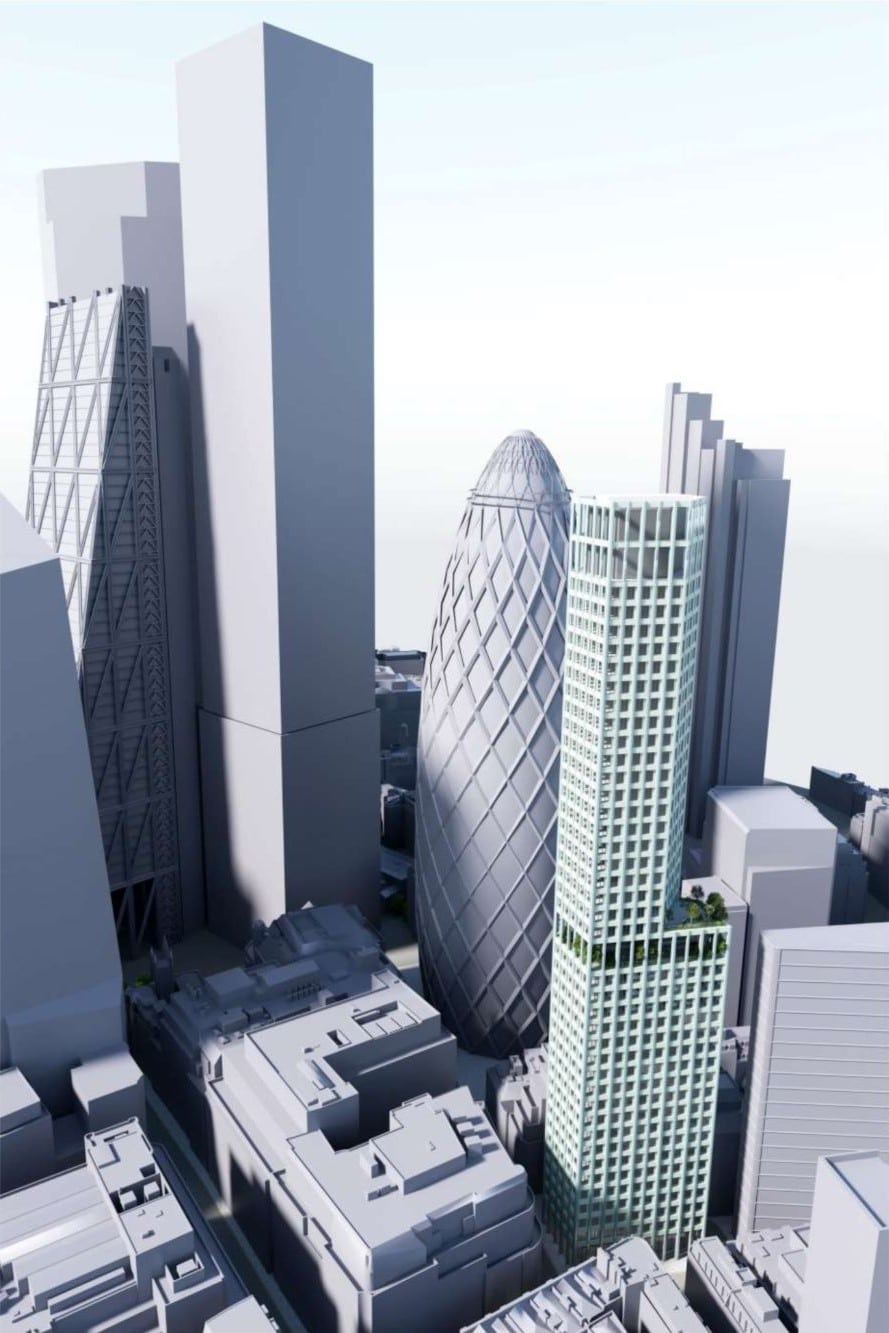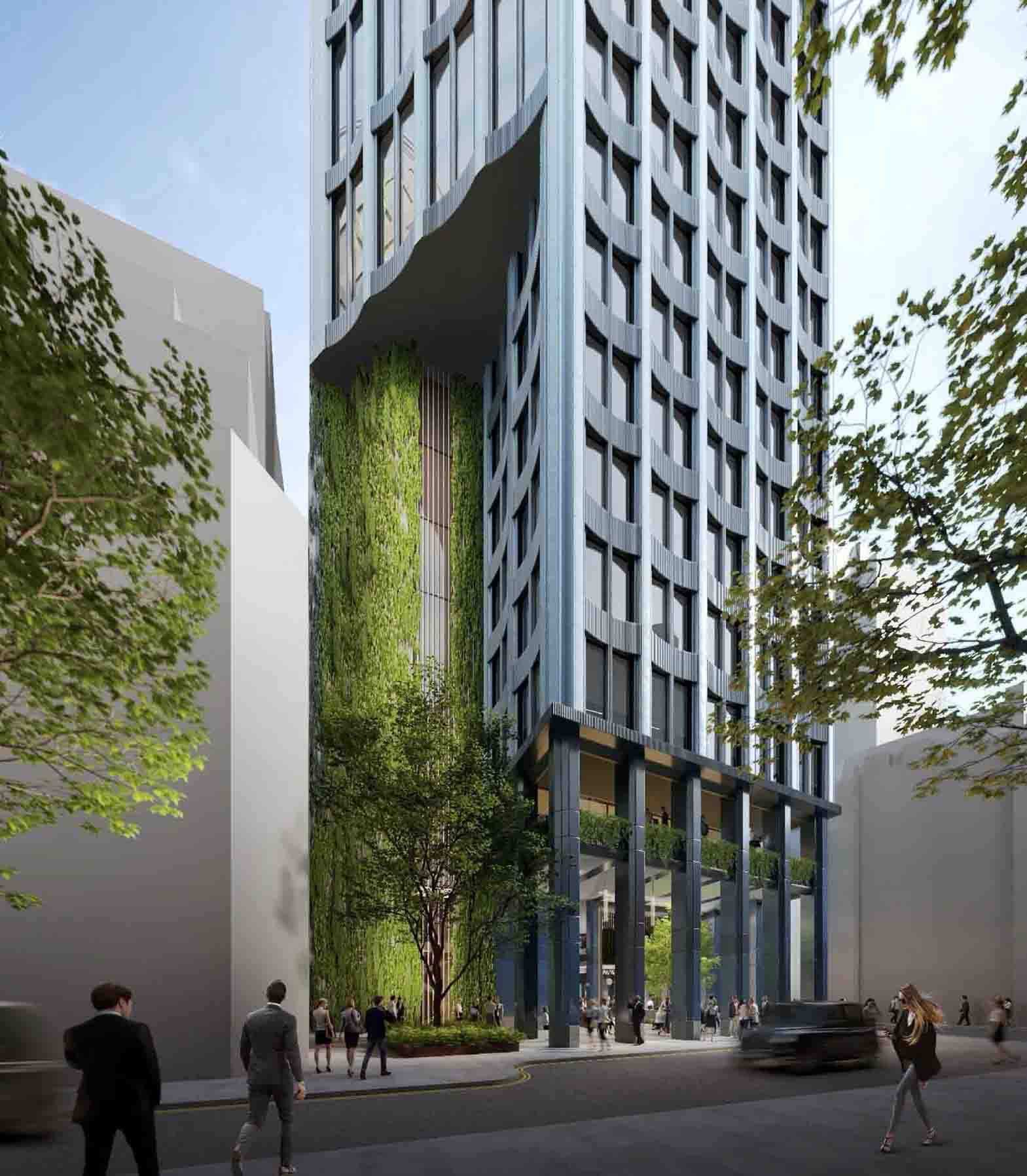Wind Engineering Solutions for Bury House – 31 Bury Street
Expert Wind Engineering Consultants Ensuring Structural Integrity


The Bury House development is a newly proposed 49-storey skyscraper in the heart of the City of London. Developed by Bentall Green Oak and designed by Stiff + Trevillion, It features a sleek and slender design that aims to offer smaller office floorplates that will benefit young and growing companies. With a light-blue terracotta cladding, it marks a move away from the glass clad aesthetic seen on most towers in the city.
At a proposed height of 180m, exceeds the 100m high-rise threshold outlined in the City of London wind microclimate guidelines, meaning e overall height of the building exceeds 180m and therefore an assessment for early massing options early stage massing optimization followed by a hybrid approach of wind tunnel testing and computational (CFD) simulations is recommended. A wind tunnel testing and a CFD study for detailed designs were required as a part of the City of London wind microclimate guideline assessment.
Windtech firstly carried out the detailed wind tunnel assessment in the ‘pre-design freeze’ phase to assess the various massing options and their impacts on the wind microclimate on a terrace and on the ground floor at ground level. This exercise provided the design team with a set of robust results in the early years of the design stage so that the most optimal design could be chosen before to proceeding to the detailed design stage. Four configurations were investigated at this stage, including the existing site with existing surrounding buildings to provide baseline results, ensuring that recommended mitigation is accurate and appropriate.
The wind tunnel testing was repeated later in the ‘post-design freeze’ phase, combining the chosen with the set massing in with various surrounding configurations to assess the wind impacts on the ground floor at ground level. Nine configurations were investigated in total to ensure that the worst-case wind scenario for each receptor location was captured.
The results from the wind tunnel testing were compared to the CFD results provided by an independent consultancy. This not only met the recommendations laid out in the City of London Wind Microclimate Guidelines. These two sets of results also provide a more comprehensive understanding of wind effects around the site.


